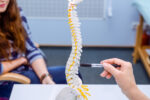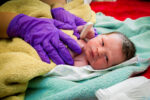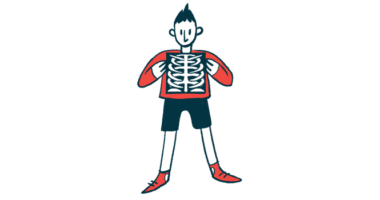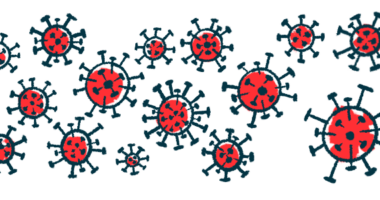Low Bone Density Puts SMA Children in China at Risk for Fractures
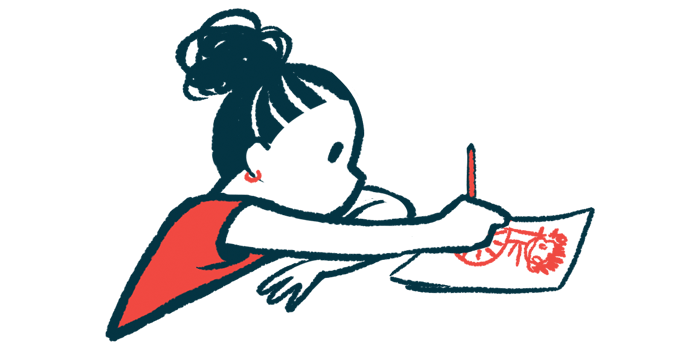
Children with spinal muscular atrophy (SMA) type 2 or 3 in China have lower bone mineral density — putting them at increased risk for bone fractures — compared with healthy children of the same age and sex, a study has found.
Furthermore, SMA type 2 children had significantly lower bone density than those with SMA type 3.
Regular monitoring of bone density and taking appropriate treatment measures in Chinese children with different types of SMA is recommended, the researchers noted.
The study, “Bone mineral density and its influencing factors in Chinese children with spinal muscular atrophy types 2 and 3,” was published in the journal BMC Musculoskeletal Disorders.
SMA is a neurodegenerative disease characterized by the degeneration of motor neurons, the specialized nerve cells that control voluntary muscle movement. The disease is caused by two faulty SMN1 genes, one inherited from each parent. Disease severity and age of onset are tied to the number of copies of a second SMN2 gene, which compensates for the loss of SMN1.
Symptoms include progressive muscle weakness and muscle atrophy (shrinkage) of the limbs and trunk. Muscular atrophy and immobility can lead to low bone mineral density (BMD) and an increased risk of bone fractures. As a result, skeletal abnormalities are some of the most common complications affecting the quality of life of children with SMA.
Many studies have investigated bone density and fracture incidence in children with SMA in different world regions. However, BMD has yet to be explored in SMA children who live in mainland China.
Using a technique called dual-energy X-ray absorptiometry (DXA) scanning, researchers at the Children’s Hospital Capital Institute of Pediatrics measured BMD in children with SMA and examined influencing factors upon bone density.
“This could lead to improved bone health management,” the team wrote.
The study included 40 children with genetically confirmed SMA (19 males, 21 females), with a mean age of 5.5 years. Of these, 22 were diagnosed with the more severe, infantile-onset SMA type 2, most of whom have three SMN2 copies. The other 18 had SMA type 3, in which initial symptoms usually appear in toddlers up to young adults, with most patients carrying three or four SMN2 copies. None of the children had used calcium or vitamin D supplements for the previous three months.
DXA measured the bone density of the total body, less the head and the lumbar spine (the bones at the bottom of the spinal column). From the results, the researchers calculated the Z-scores, which describe the deviation from the average bone density of healthy Chinese children of the same age and sex. Blood samples were also collected to measure markers related to bone metabolism.
The results revealed that, for all 40 participants, the mean Z-score was -3.0 for the total body and -1.3 for the lumbar spine, which demonstrated that the bone density for SMA children was less than in healthy children in China. SMA type 2 children had significantly lower Z-scores for both the total body and lumbar spine than those with SMA type 3.
Based on DXA measurements, 12 children (30%) had BMD in the normal range, 27 (67.5%) had low BMD, while one (2.5%) was diagnosed with osteoporosis — a disease that occurs when the body loses too much bone or makes too little. Low bone density was seen in 19 (86.4%) of SMA type 2 children and 8 (44.4%) of SMA type 3 patients. There was also a significant trend to higher Z-scores from SMA type 2 to type 3 children.
Although none of the children had experienced vertebral fractures in the spine, two (5.0%) had fractures in long bones. In one case, a child with SMA type 3 had two low-trauma fractures of the upper arm bone (humerus) at age 2, while the other, with SMA type 2, broke their upper leg bone (femur) at 8.
DXA body composition of muscles in the body was also measured using the ASM weight ratio (ASMR), based on the appendicular skeletal muscle mass, or the total muscle mass of all four limbs, divided by the total body mass. This analysis showed that the mean ASMR Z-score was -3.2, lower than that of healthy Chinese children (typically -2.0 to 2.0). SMA type 2 children had significantly lower ASMR Z-scores than SMA type 3 children.
Blood tests showed that vitamin D values were within the normal range in 25 children (62.5%), whereas six (15%) fit the criteria of vitamin D insufficiency, with values ranging from 37.5 to 50.0 nanomoles per liter (nmol/L), and nine were considered deficient, with values of 37.5 nmol/L or less.
The mean levels of bone metabolism-related markers were generally in the normal range, including calcium, phosphorus, alkaline phosphatase (liver or bone disorders), and parathormone (PTH), a hormone that regulates calcium levels. Elevated parathormone increases bloodstream calcium levels, which can lead to bone thinning. There were no significant differences in all bone metabolism-related markers between the SMA subtypes.
A statistical analysis to determine influencing factors on bone mineral density Z-scores found SMA subtype and elevated parathormone levels were significantly associated with the total body BMD Z-scores. For the lumbar spine BMD Z-score, only the SMA subtype was significantly associated.
“In conclusion, low BMD and osteoporosis were highly prevalent in mainland Chinese children with SMA types 2 and 3,” the researchers wrote. “Phenotype [SMA type] and serum PTH level might be the most important influencing factors of BMD.”
“For better multidisciplinary management and individual treatment, a future expanded sample size [group] study of BMD is warranted for Chinese patients with SMA,” they added.




